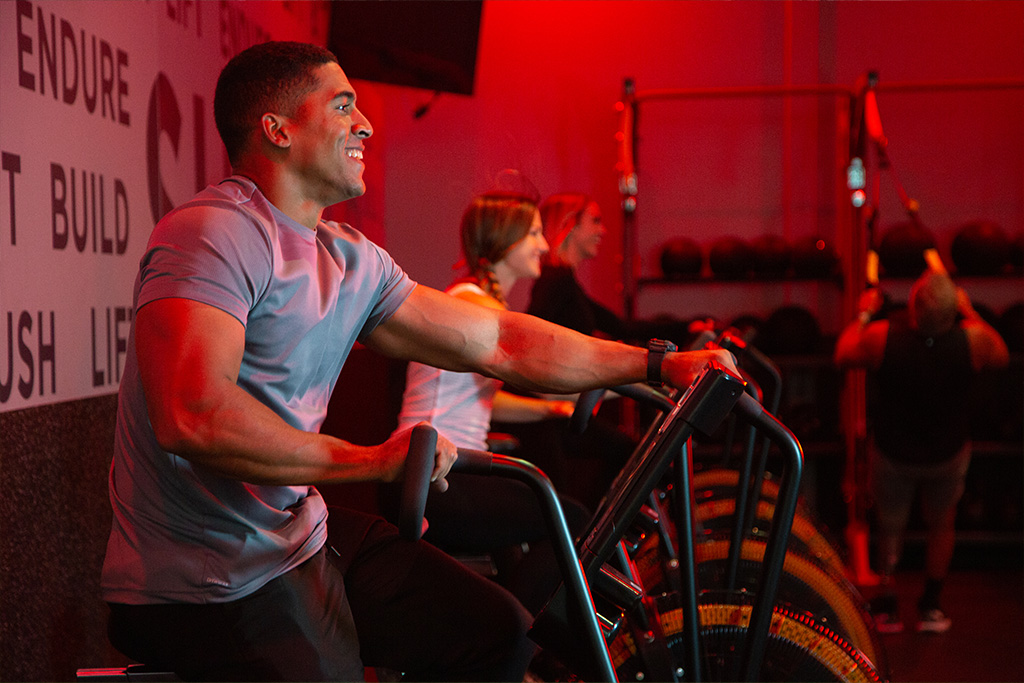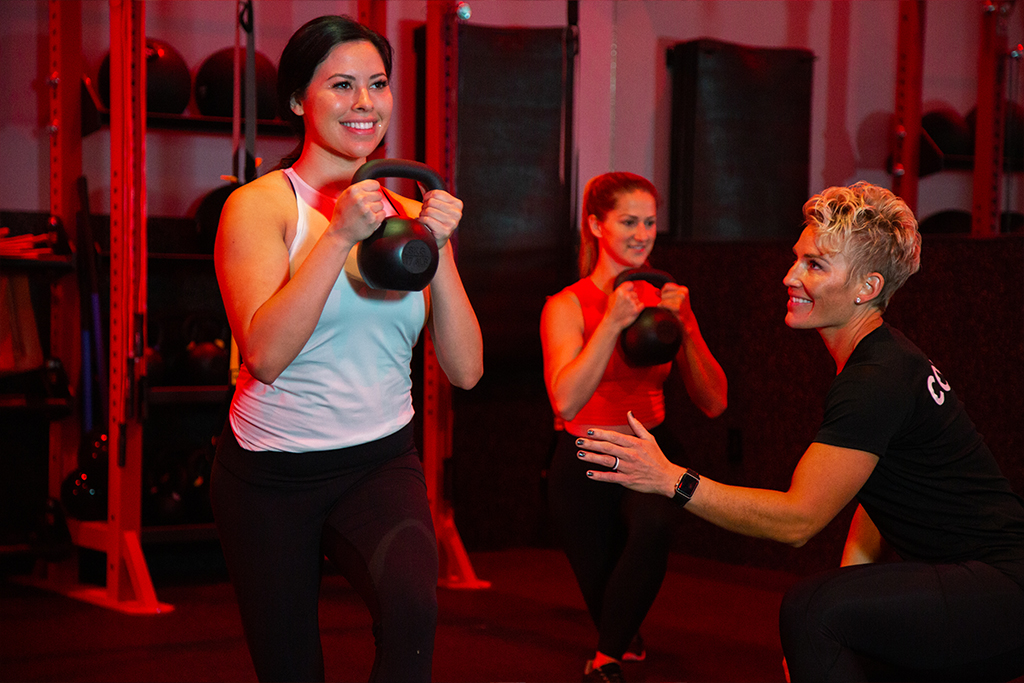The best way to approach the question, “How often should I go to the gym,” is to assess your lifestyle, determine your fitness goals, such as losing weight or muscle growth, and set a schedule for yourself. Need a little help? Read our recommendations below to determine how often you should go to the gym based on the results you want to achieve, and how much time you have to dedicate towards working out.
Understanding Your Fitness Goals
The first step in determining your workout frequency is understanding your fitness goals. Are you looking to lose weight, gain muscle, or improve overall health? Different goals require different approaches to exercise.
For example, if you’re trying to lose weight, you may want to focus on cardio and strength training to burn calories and build lean muscle mass. On the other hand, if you’re trying to gain muscle, you may wamt to focus on strength training and muscle building exercises. Knowing your fitness goals will help you create a gym routine that is tailored to your needs.
Types of Fitness Goals
WEIGHT LOSS GOALS
If you’re looking to lose weight, head to the gym two to three times per week or do 10-15 minutes of continuous activity two to three times per day. Muscle is what burns fat when we rest, so the more muscle you have, the more calories you will burn when you’re not working out. A mix of cardio and strength training will help you improve your fitness while also helping you lose unwanted pounds.
The key to weight loss is to burn more calories than you consume. The closer you get to your weight loss goals, the more you might find yourself exercising. Whether it’s through strength training or cardio, movement of any kind will help you burn calories. To really maximize weight loss, a healthy diet of lean protein and fresh fruits and vegetables will help speed up the process.
STRENGTH TRAINING GOALS
If your goal is to build muscle, you’ll need to be more cautious about how often you hit the gym. The more days you spend in the gym, the less time your muscles have to recover and grow—slowing the speed of strength or size gains. If you want to hit the gym hard with full body workouts, go three days per week. If you prefer focusing your workouts on upper body one day and lower body the next, try going four times per week. These cadences will give you enough time to recover from the stress of your workout while reducing the risk of burnout or injury. Remember, muscles grow in response to training stimulus but need time to recover and rebuild.
If you don’t have a lot of time to spend at the gym, you can do various types of resistance training at home if you have dumbbells, barbells, or even heavy bags filled with books. As long as your workout frequency is consistent enough for your muscle mass to build, you should see changes and improvements.
CARDIAC HEALTH
If your goal is heart health, working out five days a week is ideal. Try doing 30 minutes of moderate to intense cardiovascular activity every other day. This will keep your heart strong while avoiding overtraining or provoking injury. Walking, cardio machines, and additional low-impact training are great ways to improve cardiovascular health without overstressing the body. Doing 30 minutes of cardio will get your heart rate up, give you energy throughout the day, and ensure your body has ample time to recover.
Factors to Consider When Creating a Gym Routine
When creating a gym routine, there are several factors to consider. First, you need to consider your fitness level. If you’re a beginner, you may need to start with shorter workouts and gradually increase the duration and intensity as you become more comfortable. You also need to consider your schedule and lifestyle. If you have a busy schedule, you may need to find a gym that is open early in the morning or late at night. Additionally, you need to consider your budget for a gym membership (Check out VASA’s affordable monthly plans here). Finally, you need to consider your personal preferences and what type of workouts you enjoy. Do you prefer cardio, strength training, or a combination of both?


AVAILABLE TIME
Your schedule will undoubtedly affect how often you’re able to hit the gym. If you don’t have a lot of time but still want to train hard, try high-intensity interval training (HIIT). In just 45 minutes or less, you can get in a solid workout. HIIT workouts will help you stay fit and strong, even when you’re short on time. (Pro tip: Try one of our STUDIO RED classes at your local VASA to experience a fun and motivating HITT class.) Try scheduling two or three HIIT sessions per week. If you really need to maximize your time, cut out your commute to the gym and work out at home or go for a run or bike ride around your neighborhood.
ENERGY
If you don’t hit the gym as often as you’d like because you’re too tired, you might be overtraining and should spend some time evaluating your rest, sleep, and eating habits. Rest days are equally as important as gym days. If you’re not giving your body the time it needs to recover from exercise or not getting enough quality sleep, then you’re going to see a plateau in your fitness improvements and experience the burnout often associated with overtraining. Working out too much can take a toll on your body and energy levels and could lead to injury. The harder you train, the more you need to prioritize rest and sleep.
Tiredness and low energy can also be a sign of stress, improper nutrition, or a sedentary lifestyle. Exercising produces natural endorphins that help you feel happy and more energized. Taking care of the body holistically is the best way to make progress. Getting seven to eight hours of sleep and eating a balanced diet of fruits and vegetables, with minimally processed foods, and drinking a lot of water is the best way to recover from tough workouts. Managing life stresses will also help with fatigue.
BALANCE IN YOUR GYM ROUTINE
Having a balanced gym routine is essential for achieving your fitness goals. A balanced routine should include a combination of cardio and strength training exercises. Cardio exercises, such as running or cycling, work great for burning calories, losing weight, and improving cardiovascular health. Strength training exercises, such as weightlifting or bodyweight exercises, help to build muscle and improve overall strength. A balanced routine should also include exercises that target all major muscle groups, including the chest, back, shoulders, legs, and core.
SHOULD I GO TO THE GYM EVERYDAY?
Using your gym membership every day is not nearly as effective as you might think. Most workouts should last around 45 minutes. Give your body the time it needs with rest days to recover and build muscle tissue. If you go to the gym every day or work out for an hour or more, you will most likely be overtraining which could lead to injury, burnout, or frustration when you plateau.
SO, HOW OFTEN SHOULD YOU GO TO THE GYM?
Going to the gym three to four times per week is perfect for maintaining current fitness levels and staying in shape. Athletes or people wanting to take their fitness to the next level should go to the gym six times per week.
These are general guidelines, but everyone is unique and will require a different exercise program based on their available time and goals. Scheduling exercise into your week will help you incorporate it as a regular, healthy habit.
Achieving Your Fitness Goals
Achieving your fitness goals requires consistency and dedication. It’s essential to create a gym routine that you can stick to in the long term. This means finding a routine that you enjoy and that fits your lifestyle. It’s also essential to track your progress and make adjustments as needed. This can include increasing the intensity or duration of your workouts, or changing your diet to support your fitness goals. Community and support can make a big difference in your success, so the right gym and personal trainer could take you to the next level.
If you want a concrete fitness plan – whether it’s to lose weight, increase your strength training, or just to have another good reason to go to the gym schedule a free one-hour personal training consultation at your local VASA. Start or level up your fitness journey with a certified personal trainer and create a personalized plan to meet your goals.
SUBSCRIBE TO OUR BLOG
Enter your email to start receiving our blog emails!









